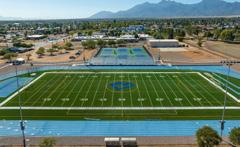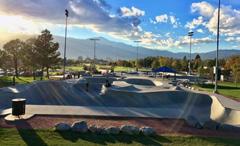
CHAMPS















With our roster of facilities and accommodations, The Beach is the perfect fit for any sporting event. Myrtle Beach has hosted it all, including a wide variety of youth sports, esports, an NCAA football bowl game, an NCAA men’s basketball tournament, an official PGA Tour event and the World’s Strongest Man competition.
Myrtle Beach has more than 100 fields, courts and facilities that can compete with some of the nation’s best. Whether you need complexes that can host entire tournaments, stadiums that can seat thousands or fields that are suitable for the best of the best, our planning professionals will connect you with the perfect venue for your event.
60 MILES MADE FOR PLAY
At The Beach, the games don’t end at the final whistle. Our 60 miles of beaches, classic boardwalk attractions, theme park rides and live entertainment give your attendees plenty of ways to play on. And when it’s time to refuel, athletes and their families will have over 2,000 restaurants to choose from all across the Grand Strand.

The latest edition in our growing Where2Play (W2P) series blazes a trail through some of the most dynamic and diverse competition spaces in the country. Where2Play: Tracks & Courses explores the venues powering track & field events, cross-country meets, BMX competitions, mountain biking races and more. Whether it’s an elite-level stadium, a wooded trail system or a purpose-built BMX course, this guide brings together destinations that go the distance for both athletes and organizers.
As with every edition of the W2P series, our goal is to simplify your event planning journey. Whether you’re hosting a high school invitational, a collegiate cross-country championship or a national cycling event, this guide is built to help you quickly locate the facilities best suited for your event’s needs. From synthetic tracks and certified cross-country routes to pump tracks and rugged terrain parks, these venues reflect a mix of innovation, accessibility and scenic appeal.



This new edition also offers a trio of features, exploring how world-class events are built from the ground up and why they matter. Whether it’s IRONMAN’s cutting-edge innovations in athlete care, Eugene’s deeprooted identity as “TrackTown,” or the community-powered rise of BMX across America, these stories spotlight the planning, passion and people driving U.S. sports forward. Together, they offer a look inside not just how events are hosted, but how they shape athletes, energize cities and inspire the next generation.
Where2Play: Tracks & Courses celebrates the facilities shaping today’s competitions and tomorrow’s champions. We’re proud to help you discover them. We hope you enjoy this new edition—and as always, happy planning!
Be safe and play well,

Christopher D. Silbernagel Associate Editor
Publisher Jeffrey Gayduk, jeff@ptmgroups.com
Chief Editor Jason Paha, jason@ptmgroups.com
Associate Editor
Christopher D. Silbernagel, chris@ptmgroups.com
Production Coordinator Kelsey Ledford, kelsey@ptmgroups.com
Graphic Designer Romeo Alcantara
Additional Contributors
Kristen Cerney Bella Kiriakis Daniel Vasquez






























BY USA BMX | AMERICAN BICYCLE ASSOCIATION
Lined up at the starting gate, you hear the roar of the crowd growing louder and louder—a crescendo of claps, shouts and air horns building anticipation.
“Riders ready, watch the light,” the announcer warns. Seconds later, a loud beep emits as the gate drops, propelling you forward onto the dirt track. The wind whistles in your ears as you gain speed, rounding the berms and pedaling mightily on the straightaways toward the finish line—and, ideally, a spot on the podium. The crowd explodes as you narrowly edge out the rider on your right, earning you high-fives and kudos from your fellow riders as well as the admiring supporters filling the stands.
While this is a scene that plays out on the world stage—like last year’s Olympic Games in Paris, for example—it is also happening right now at your local BMX track.
That same level of excitement—which most fans describe as an all-out 10—is undeniable at the more than 300 BMX tracks across the country sanctioned by USA BMX, the world’s largest BMX racing organization. Every week, these volunteer-run tracks pave the way for BMX riders of all ages to experience BMX riding for the first time, or the thousandth time.
It is at these local tracks where riders and families become a community. It’s a place where everyone is welcome and encouraged.
It’s at these local tracks where tomorrow’s world champions begin their BMX journey.
At its heart, BMX racing is as much about community as it is about competition. On any given weekend, families gather at local tracks—lawn chairs in tow, coolers packed and team



Riders explode from the gate at top speed, fiercely jockeying for position on the track.
tents popped up—ready to cheer on riders of all ages. It’s not uncommon to see toddlers taking their first steps into the sport on balance bikes, while parents volunteer as gate operators, concession helpers and race officials.
Tracks become more than just places to ride—they become second homes. Friendships are forged not just between riders, but entire families. There’s a shared sense of support that spans across state lines and competition levels. The sport’s culture is built on encouragement, respect and helping one another get better—on and off the track.
“It has kept us strong as a family,” said one parent from Pennsylvania. “You look back at photos of some of these kids racing, and my goodness, they were little peanuts on the podium. What’s so great about this community is the ability to support each other.”
From small towns to urban neighborhoods, BMX offers a powerful, positive outlet where kids feel like they belong—and where every rider, no matter their background, has a shot at greatness.
One of the most unique things about BMX racing is its inclusiveness. Whether you’re 3 or 63, brand new or a seasoned rider, there’s a place for you on the track.
It’s a sport designed with progression in mind—a “stairway to success” that helps riders grow every step of the way.
Beginners start on balance bikes or in novice classes, learning the fundamentals of bike handling and track etiquette in a low-pressure environment. As they gain confidence, they move up to intermediate and expert levels, gradually taking on more technical tracks and fiercer competition.
For those who really catch the bug, the opportunities are endless. Avid riders can travel to state, regional and national races, racking up points and making friends across the country. And for those who want to go even further, there’s a clear path to the highest levels of international competition.It’s this structure—welcoming to newcomers, yet aspirational for veterans—that makes BMX so magnetic. Riders can advance at their own pace, fueled by personal goals, peer support and the thrill of progress.
Every Olympic dream starts somewhere—and for BMX riders, it often starts on a dusty local track under Friday night lights. USA BMX’s structured points system allows riders to earn local and district rankings based on performance throughout the year.
Those rankings open doors to state championships, Gold Cup qualifiers, national races, and, ultimately, the opportunity to represent Team USA on the world stage.
Unlike some sports, where elite opportunities can feel elusive, BMX offers a clear, accessible ladder. That means the kid pedaling hard at your neighborhood track might one day line up against the best in the world at the UCI World Championships—or even the Olympics. It’s a merit-based system built on commitment, consistency and heart, and because riders are grouped by both age and skill level, the sport keeps things competitive while ensuring everyone gets a fair shot at success.
“This sport is all about accountability,” said a track operator in Kentucky. “You can practice as a team, you have the community of other riders, but at the end of the day, you’re the only one on that bike. It’s also not something you can do without a true love and passion for the sport.”
If there’s one rider whose story captures the spirit of BMX, it’s Olympic gold medalist Connor Fields. Hailing from Nevada, Fields first discovered the sport at age 7 when he showed up at his local
track after seeing a flyer his mom brought home. What began as a weekend hobby quickly turned into a passion.
Through years of hard work, relentless training and community support, Fields climbed the ranks—local races, state titles, national competitions—until he earned a spot on Team USA. In 2016, he etched his name in history as the first American to win Olympic gold in BMX racing.
Fields’ rise wasn’t just about physical skill; it was about mental toughness, resilience and the strong foundation laid at his local track. Even now, postretirement, he remains a powerful ambassador for the sport—mentoring young riders and promoting the values that shaped his journey.
His story is proof that with the right support, the right mindset, and the right community, anything is possible.
Looking Ahead: 2028 UCI BMX Racing World Championships and 2028 Olympic Games
The future of BMX racing is brighter
than ever—especially with a global spotlight heading to the United States. In 2028, Houston’s H Town BMX Supercross Track will host the UCI BMX Racing World Championships, drawing the best riders from around the globe to one of the most impressive tracks in the world.
Opened in 2019, the 30-acre facility is more than just a racecourse; it’s a beacon for BMX development in the United States. As the largest BMX park in the country, it features both amateur and elite-level tracks, welcomes riders of all abilities and serves as a training ground for future stars.
Hosting the World Championships at H Town BMX Supercross Track isn’t just a win for Houston—it’s a celebration of how far the sport has come in America. From grassroots riders to Olympic hopefuls, the event will showcase the full stairway to success and reinforce BMX as one of the most thrilling, accessible and community-driven sports in the world.
What’s better than one global BMX showdown on U.S. soil? Try two! The 2028 Olympic Games are headed to Los Angeles—fittingly, the very birthplace of BMX racing. It’s a full-circle moment for the adrenaline-fueled sport, as the world’s fastest riders return to where it all began, chasing gold under the California sun and reigniting the energy of the sport’s roots on the biggest stage of all.
BMX racing is fast. It’s fun. It’s a little bit wild. But above all, it’s a gateway—to confidence, to community, to global opportunity. Whether you’re a curious first timer, a passionate parent, or a lifelong fan, there’s room for you at the track. Head out to a local race. Watch the gate drop. Feel the energy. Meet the riders. Because every champion—from Connor Fields to the future stars of Team USA—starts with a single lap. Yours could be next.

BMX tracks are a place where everyone is welcome and encouraged.
INSIDE IRONMAN: AN INTERVIEW WITH JOHN POOLE ON RACE STRATEGY, COMMUNITY IMPACT AND GROWTH
When IRONMAN announced it would bring a 70.3 race to Rockford, Illinois, it marked more than just a new dot on the race map, it signaled a strategic and deeply intentional move. As North America’s race portfolio continues to expand, The IRONMAN Group is prioritizing access, community, and regional character. In Rockford, they found all three: a welcoming host city large enough to support the logistics of a world-class event and ideally situated to draw athletes from across the Midwest.
In this conversation with John Poole, IRONMAN vice president of business development, North America, we explore how The IRONMAN Group balances consistency with local flavor, what goes into curating the athlete experience, and why partnership with the host community is non-negotiable. From developing custom racecourses that showcase natural beauty to giving back via charitable grants, IRONMAN is as much about building relationships as it is about testing endurance.
We also dig into what’s next for the global brand—from carbon-conscious planning to live-broadcast innovations that bring the sport closer to fans than ever before. And behind it all, Poole shares a personal side, including the sports that shaped him and the teams that still fuel his passion.
What factors influenced The IRONMAN Group’s decision to bring IRONMAN 70.3 to Rockford, Illinois?
Our ultimate goal is to enable as many people as possible to accomplish their dreams through crossing finish lines at our events. In order to do this, we know that we need to host races that are accessible to cities with large population bases. Based on the logistical elements that go into hosting our events, being close to, but maybe not directly in major metro areas in becoming increasingly important.
Vice President of Business Development, North America,


“Athletes
recognize when they are welcomed to a community and they return in future years while also bringing their friends with them.”
– John Poole IRONMAN vice president of business development, North America

Rockford is the perfect match of having a destination that is large enough to host an event of this scale while also being accessible to people in Chicago and the broader Midwest area. In Rockford, we have been welcomed with open arms by the local community. It is clear that the city embraces the IRONMAN brand and ethos and the athletes will experience this firsthand.
How does The IRONMAN Group engage with local communities to foster support and ensure the success of events like the IRONMAN 70.3 in Rockford?
IRONMAN wants to be in communities that want to host world-class events. A partnership where there is mutual interest is critical to the long-term success of the event. Athletes recognize when they are welcomed to a community, and they return in future years while also bringing their friends with them.
Additionally, through the IRONMAN Foundation, we provide charitable grants back to local non-profit organizations
who support the event. These grants support many local initiatives that are meaningful to the community on a yearround basis, so our impact lasts much longer than just race weekend.
With IRONMAN events held globally, how do you tailor each event to reflect the unique characteristics of its host city while maintaining your core identity?
Each community is unique, and IRONMAN wants to showcase these unique destinations. This is what gets our athletes excited about traveling to many destinations for events.
When we are initially planning events, we work with local officials to develop courses that showcase the best of what a destination has to offer in terms of terrain, landmarks, city views, and overall beauty.
Racing along the coast in California is very different from tackling the hills in Upstate New York.
Both are amazing experiences, and both are IRONMAN branded races, but they have their own unique flair to showcase the locality of each destination.
How does The IRONMAN Group ensure a consistent and high-quality experience for athletes across diverse locations?
At IRONMAN we have a set of high-level standards which we put into practice through our team of professional event operators.
These standards exist for each race regardless of destination.
The experience of our extensive global team putting on hundreds of events every year enables us to rely on our experience to deliver world-class events on a consistent basis.
Are there any upcoming innovations for IRONMAN that you’re excited about?
The IRONMAN Group is always striving for ways to continue to advance the endurance landscape so more people can engage with our events in a positive way.
Our IRONMAN Pro Series and the associated live broadcasts are part of this. We are trying to get the sport of triathlon and IRONMAN racing in front of more and more people. To do this we need to
consistently provide compelling content.
Advances in technology are being implemented to make this a reality.
For example, in the past we used cameras in helicopters to provide overhead shots of the event. Now we are mounting Starlink satellite dishes to motorcycles so our drones can provide live overhead views of the event for more sections of the courses.
The spectacular views draw more people into the sport based on having access to this incredible coverage of our events.
is The IRONMAN Group addressing environmental sustainability in its events?
The IRONMAN Group is continuously trying to improve our events. This includes partnering with local communities on environmental sustainability that makes sense for that community.
There are a number of communities where we develop recycling plans for each venue. There are races where we strive for “zero waste” based on local groups who support the event.
More recently we have started to look at carbon emissions, particularly at our UTMB World Series events. (See attached press release).
Which sport(s) do you like to watch and/or play the most?
My favorite sport to watch is soccer. I grew up in England and it is a sport engrained in the culture of the country.
I watch the Premier League, Champions League, and major international tournaments such as the World Cup and European Championships. I am also a big basketball fan particularly at the college level.
When I was in graduate school at VCU, the team went to the final four and it was an incredible experience to be a part of as a student.
I am a big fan of March Madness. Soccer and basketball were the sports I primarily played growing up. I now am an avid runner and race in various distances up to the marathon distance. I now have ambitions to do an IRONMAN 70.3 as the next step in my endurance race goals.



“Eugene’s
dedication to track & field runs deep. Our investment in world-class facilities and building strong community support ensures the legacy of TrackTown will thrive for generations.”
– Philis McLennan director of Conventions & Sports Marketing at Cascades & Coast Sports Commission

EUGENE, OREGON’S TRACKTOWN IS THE BEATING HEART OF TRACK AND FIELD
BY KRISTEN CERNEY
Track & field has seen an impressive uptick in participation over the past years, appealing to a wide variety of athletes who enjoy sprinting, distance running, jumping and throwing. The diversity and love of this sport allows for unique events to succeed nationwide.
With a sprawling 120 years of history, no city understands track & field better than Eugene, Oregon. Known by its affectionate nickname, TrackTown, Eugene is the beating heart of track & field in the United States. The city’s achievements, events and athletes make it the perfect location to understand the world of track.
“Eugene’s dedication to track & field runs deep. Our investment in world-class facilities, securing major events and building strong community support ensures that the legacy of TrackTown will thrive for generations,” said Philis McLennan, director of Conventions & Sports Marketing at Cascades & Coast Sports Commission.
Historic Hayward Field, located at University of Oregon (UO), has held track & field events since its inception in 1921. In this century, it has hosted NCAA Championships, USA Championships and PAC-10 Championships. Hayward is the only location to host five consecutive U.S. Olympic Trials (2008–2024), as well as hold both the World Athletics Championships (2022) and the World Athletics Diamond League Final (2023). On top of this impressive resume, it was also featured in multiple movies, including National Lampoon’s Animal House (1978).
Eugene and Hayward Field continue to highlight why they have earned their reputation, bringing in millions of dollars
each year through track & field events. In 2024, they generated more than $50 million for the region, and 2025’s schedule is packed with unparalleled events—many of which are happening for the first time.
Planning a track & field event can be daunting. To help navigate, SPG spoke to some of the leading professionals in the business to gauge what they prioritize to create a successful event.
For the second year, Eugene, Cascades & Coast Sports Commission is using a strategic marketing plan they call ‘Welcome to TrackTown’. The goal is to welcome athletes, fans and residents alike to Eugene and inspire local businesses to get involved, attend events and join in on the fun that this unique sport provides.
“The campaign won multiple national industry awards last year and is even bigger and better this year,” said McLennan.
More than 60 businesses so far in the Eugene-Springfield metro area are involved and wearing Welcome to Tracktown shirts and buttons, as well as decorating their establishments with Welcome to Trackdown collateral, such as hotel door hangers, table tents and–of course–coasters.
The commission’s efforts don’t stop
there. They are running advertisements through radio, television and social media, as well as on a billboard facing the major highway into the city, the airport and on all buses in the local transit system. Street poles are donned with banners for all major events, and patrons are given pocket guides and postcards when they attend.
With its packed roster, Eugene has multiple organizations responsible for planning different events. Tracktown USA is the company that leads the promotion and production of the Olympic Trials and USATF events, in addition to the annual Diamond League Prefontaine Classic. Michael Reilly, chief executive officer, broke down the key components to executing a successful event.
The first, and arguably most important step, is to generally know the type of event and who it is for before working on the details. With track being such a diversified sport, nailing down the specifics will clear up any confusion about which direction to go while planning. Reilly clarified that the athletes are the heart of the competition, and starting with a specific vision for the event will ensure they are supported the best way possible.
If the event is to be televised, thinking about what the broadcast audience

wants is imperative when trying to reach a broader audience. It is equally important to provide the broadcaster with what they need to create an engaging television experience.
TrackTown USA has found the most effective way to increase ticket sales is through email marketing. After years of building up an impressive database filled with interested potential customers, this direct communication gives them all the information they need for upcoming events. Having an effective social media strategy is a great way to spread awareness about incoming ticket sales, the athletes competing and build your brand–but most importantly, it gets people excited.
The significance of volunteering
As with most things in life, it takes a village to get things done, and the same can be said for hosting track events. Even TrackTown USA, an organization of 28 employees, seeks out additional help to pull off large events. Not only does this greatly improve the overall experience of all involved, but it makes these events possible to begin with.
When looking at some of the largest events at Hayward, like the Prefontaine Classic, a majority of those involved with ushering, selling merchandise, answering questions or helping people to their seats were volunteers–many of whom recruited a friend to join. Reilly explained how hosting national and international events have volunteers flying in from out of the country just to participate; and while smaller events might not have the same breadth, building a community of individuals passionate about the sport can go a long way.
The volunteers influence the energy of the event as they are doing most of the interactions with spectators.
For the U20 Championships, TrackTown is focused on making it about peer-to-peer service and finding volunteers of a similar age to the athletes to create a youthful energy. They hope this encourages young people to fall in love with track & field. The tangible enthusiasm event planners have for track & field carries over into the events they create. Not only do they build a supportive environment for athletes to reach new heights, they also bring fans an experience they can treasure.


While best known for its beaches, the Caribbean also delivers compelling terrain and weather conditions perfect for track and course-based sports. Specifically, Puerto Rico’s natural beauty and tropical climate offer athletes an unforgettable experience and top-quality track & field venues.
RICO
PUERTO RICO
PUERTO RICO
PUERTO RICO
JOSÉ FIGUEROA FREYRE STADIUM THE OLYMPIC VILLAGE

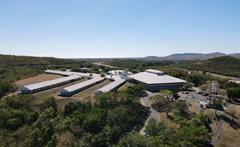
“The Olympic Village in Salinas is Puerto Rico’s premier training center for elite athletes in sports like track & field, gymnastics and more.”

Puerto Rico has many activities for athletes and families to enjoy before and after each event.

The Eastern U.S. is packed with historic courses, elite athletic facilities and natural backdrops perfect for cross-country and endurance racing. From Rhode Island to Maryland, this region blends tradition and innovation to offer dynamic venues for track & field, mountain biking and more.













Our social media network makes connecting THE dots easier
PENNSYLVANIA









“Valley Preferred Cycling Center and the roads of the Trexlertown area are renowned for being some of the best by cyclists worldwide.”

Where2Play:
From the Appalachians to the Gulf Coast, the South is rich with opportunity for track and course events. Year-round warm weather and a mix of urban tracks, wooded cross-country courses and emerging BMX parks make it easy to host high-level competitions with Southern hospitality and logistical ease.










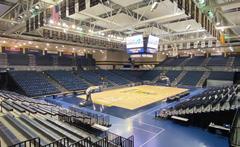




















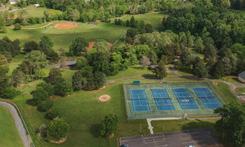




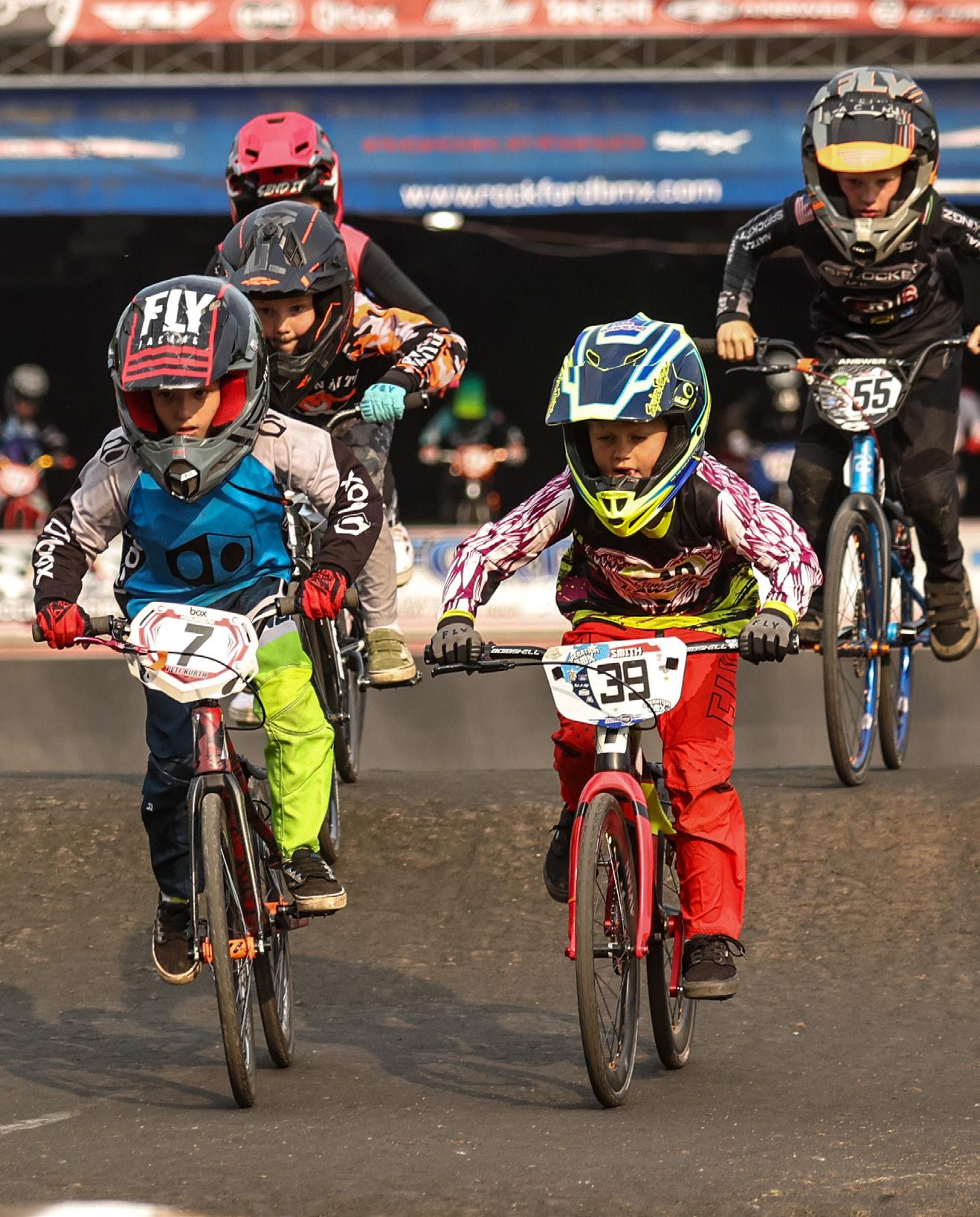
Rolling hills, forested courses, and some of the nation’s top track complexes define the Midwest’s offering. Whether you’re racing down mountain biking trails in Indiana or competing in multi-lane stadiums in Illinois, the heartland provides diverse offerings for events at every level, with scenery and support that make a lasting impression.
BLOOMINGTON-












ILLINOIS
ILLINOIS
WILDLIFE PRAIRIE PARK
ILLINOIS
PEORIA WILLIAMSON COUNTY

QUAD CITIES
HUB RECREATION CENTER ST. AMBROSE UNIVERSITY





QUAD CITIES
SEARLS PARK AUGUSTANA COLLEGE BURDETTE PARK


















LEGGETT


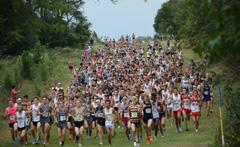


“With over 150 parks, Milwaukee County has miles of trails, beer gardens, dog parks, beaches for sports and leisure, community centers, botanical gardens and more.”

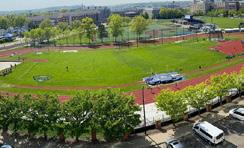



The Western U.S. is an endurance athlete’s dream. From the Rockies to California, majestic mountain trails, desert routes and world-class track facilities make this region ideal for hosting everything from cross-country and trail races to elite track & field and BMX competitions. With its varied terrain and highaltitude training potential, the West sets the pace.
